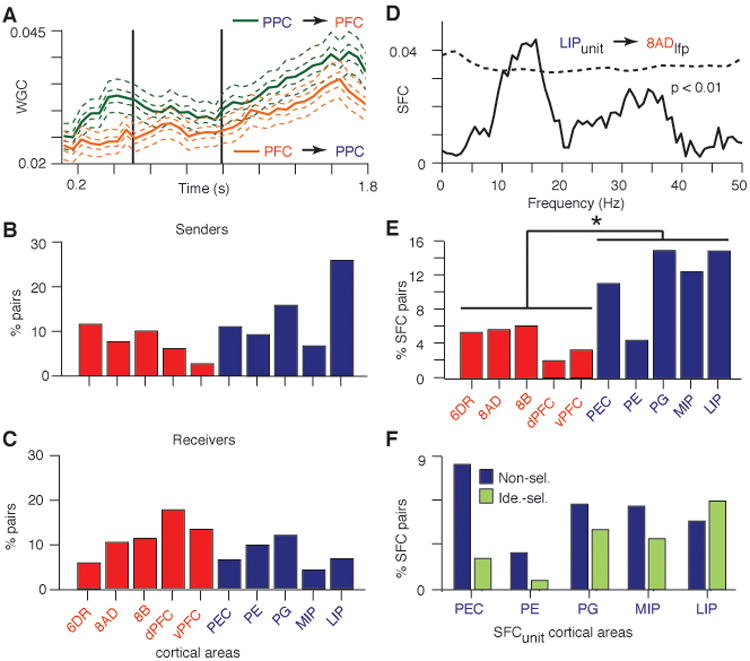Fig. 3.

Fronto-parietal interactions are dominated by parietal-to-frontal influences. (A) Time course of WGC in the 12-22 Hz frequency range for all identity selective pairs (mean ± SEM; n = 438). (B, C) Bar charts of the incidence of significant WGC directional differences with respect to cortical area for all the signal pairs in A. (D) Example of the SFC for a LIP unit and the field recorded in area 8AD. Dashed line indicates confidence limit (p < .01, randomized surrogate). (E) Percentage of fronto-parietal pairs with significant SFC between 12 and 22 Hz. The unit activity was recorded in the labeled areas. See Tables S1 and S3 for abbreviations and sample sizes. (F) Percentage of significant PPCunit–PFClfp pairs with respect to the parietal area in which the unit activity was recorded and split according to the stimulus selectivity of the cellular responses.
